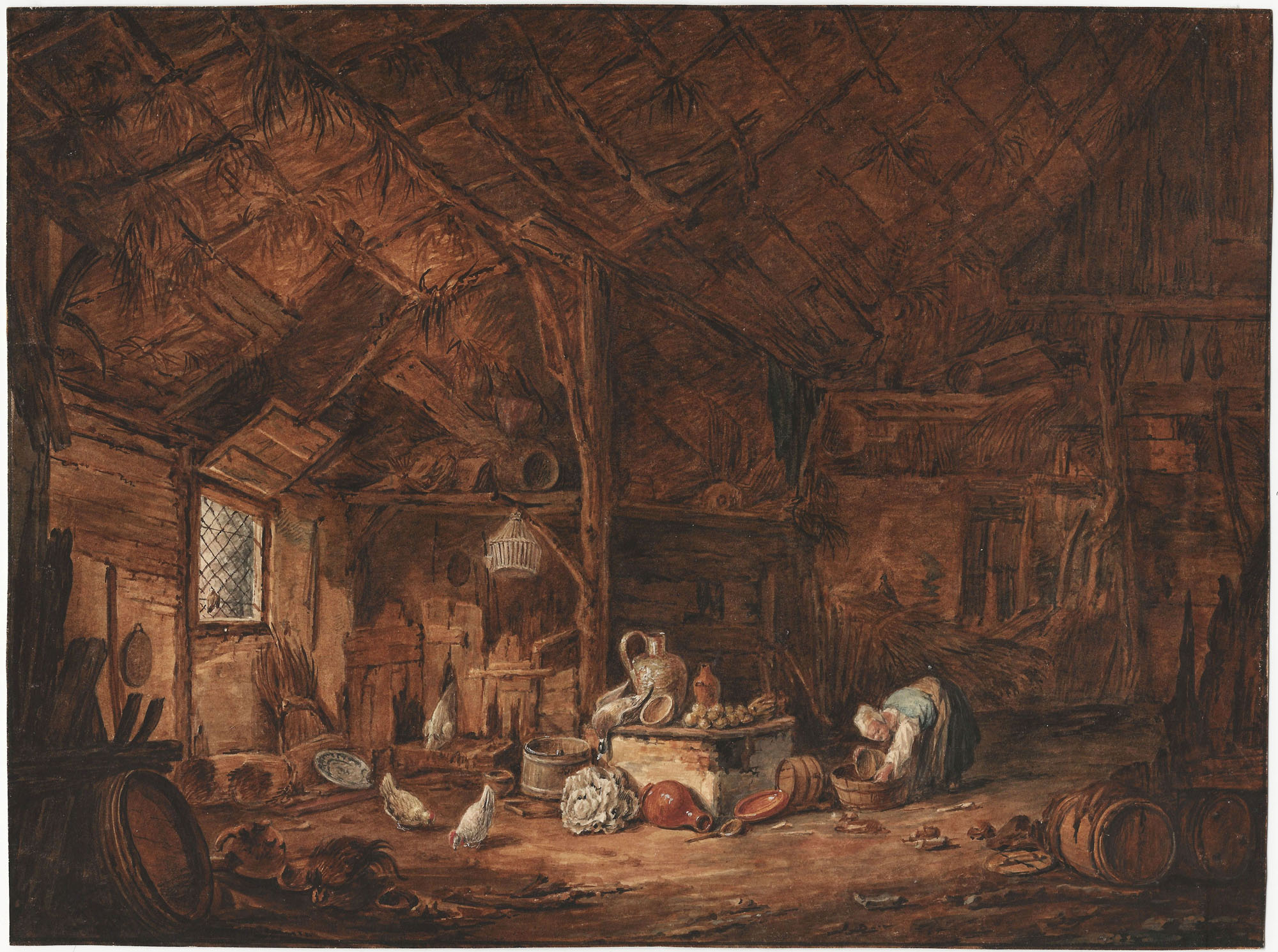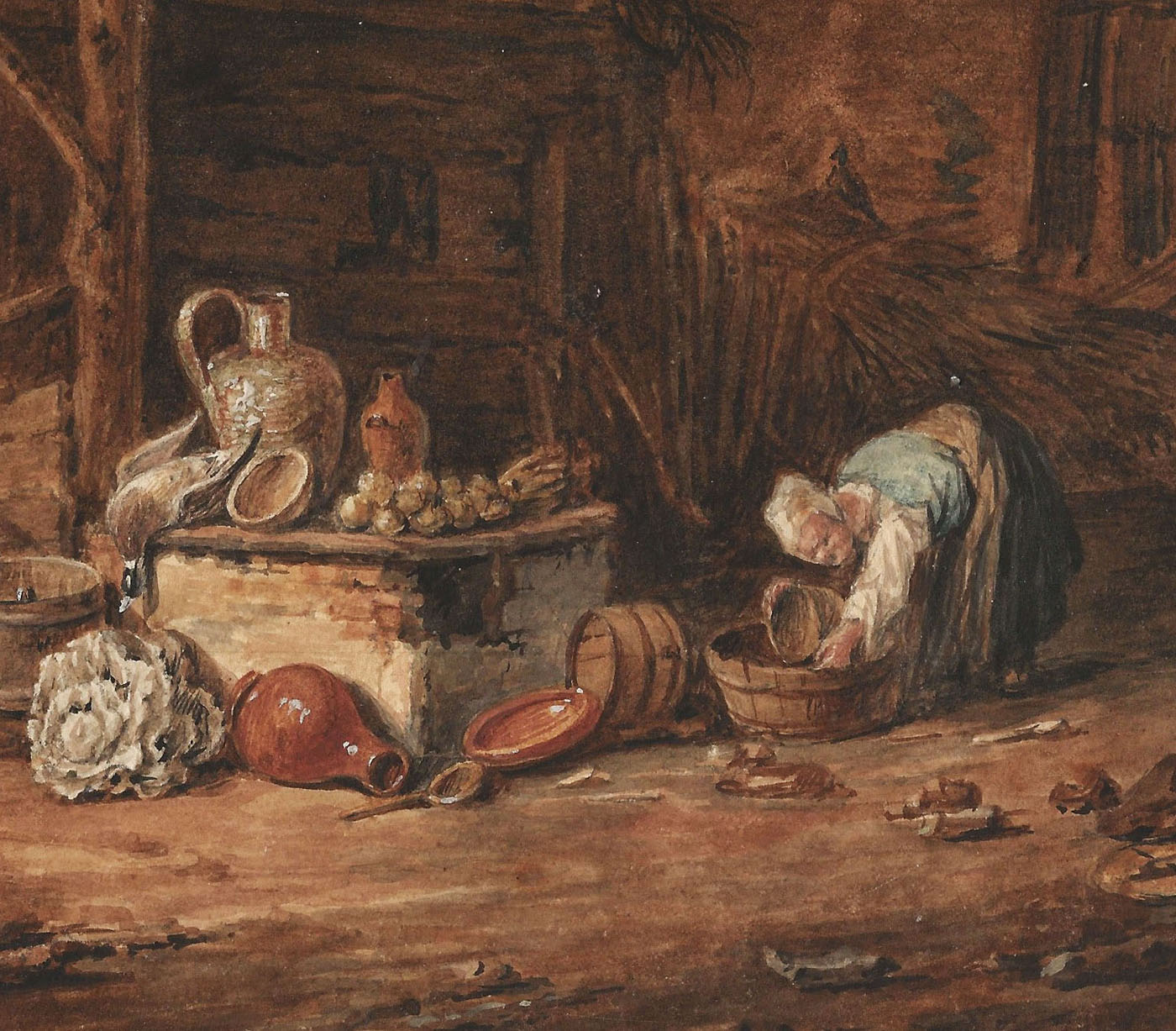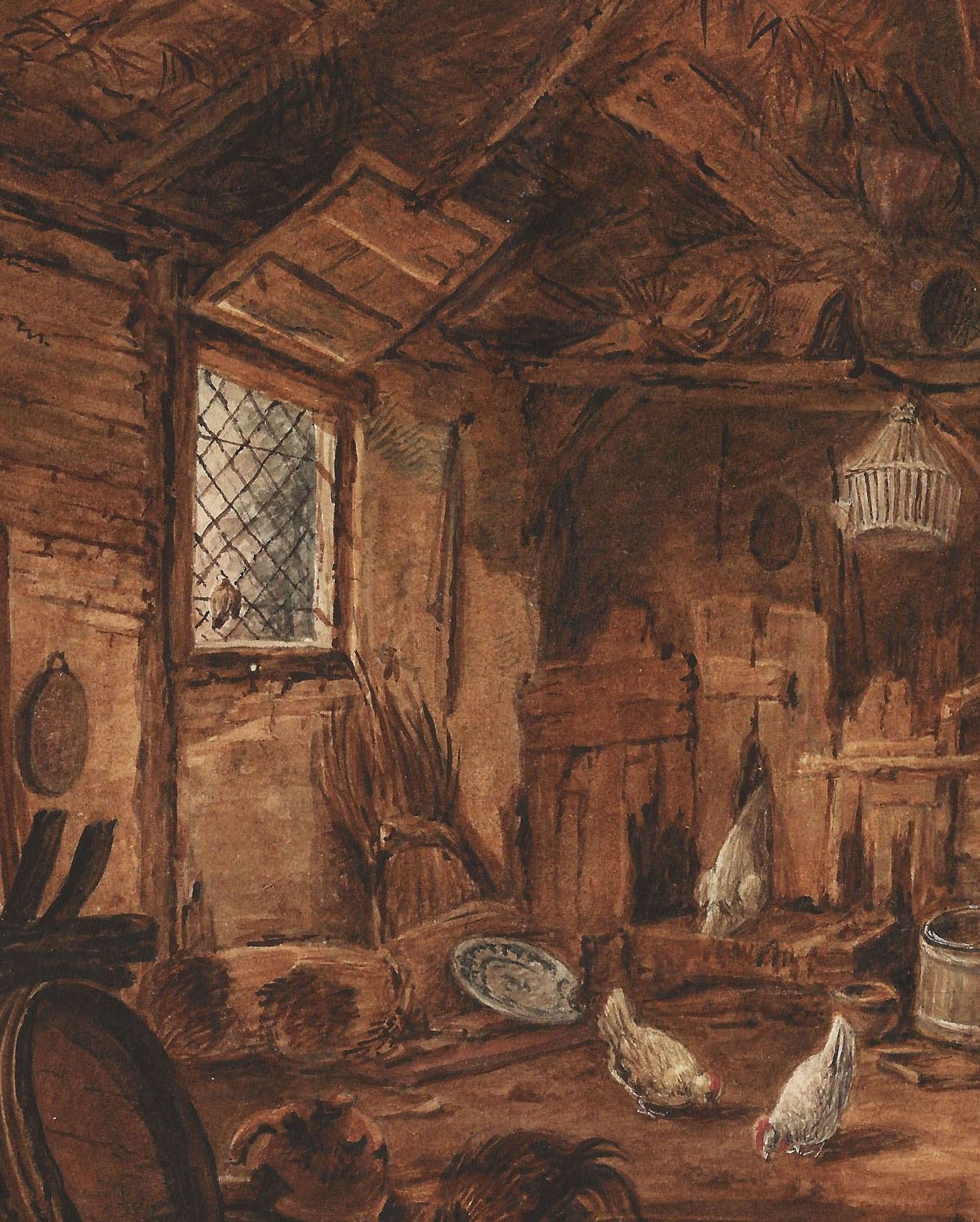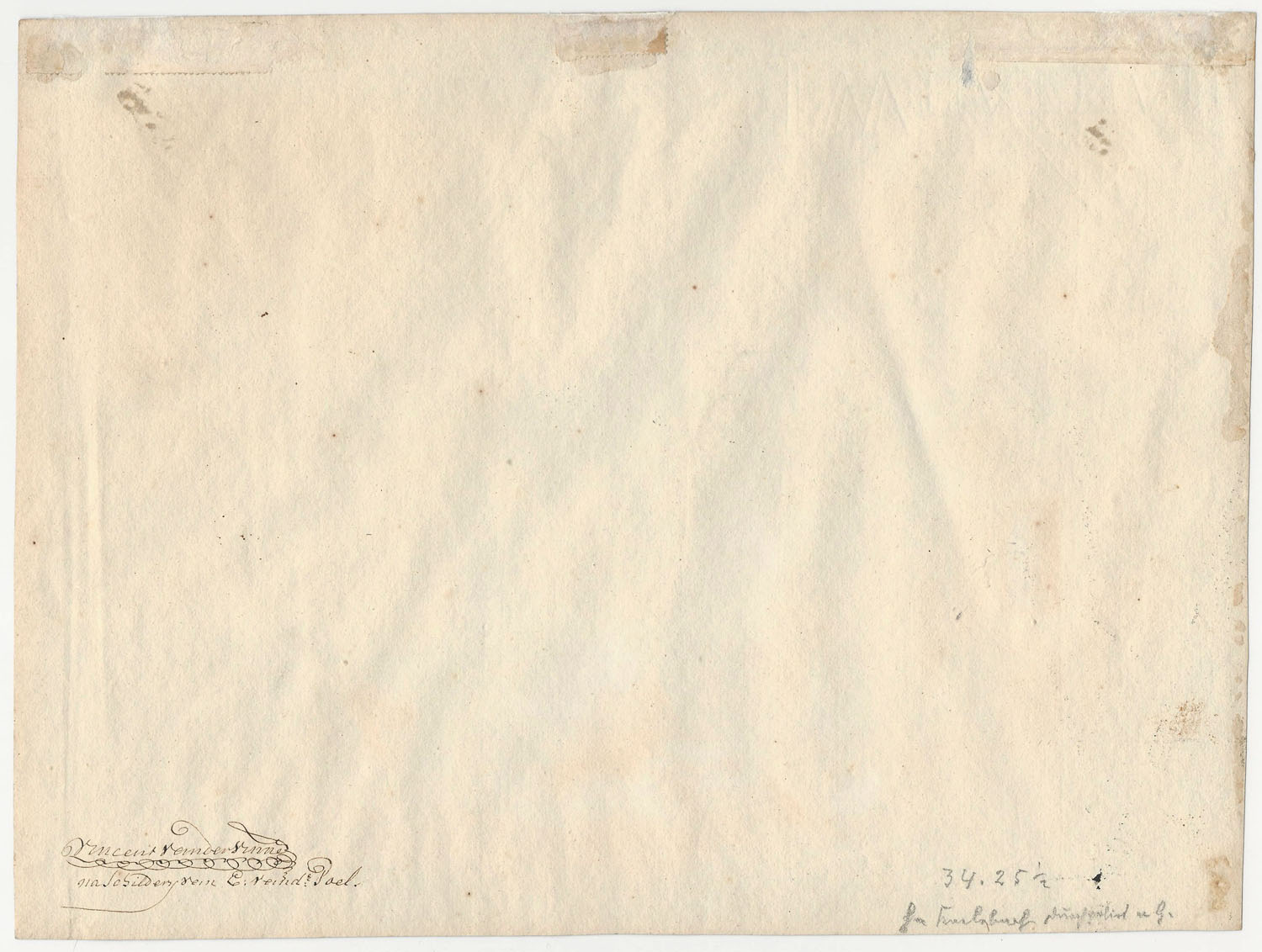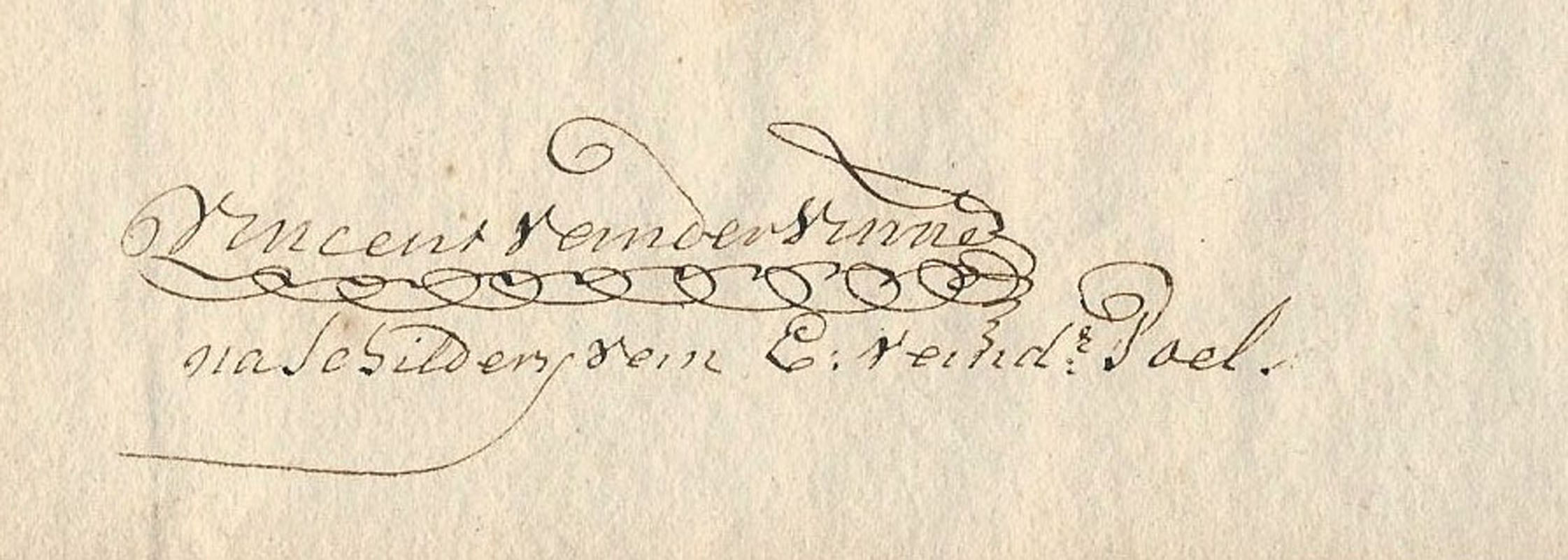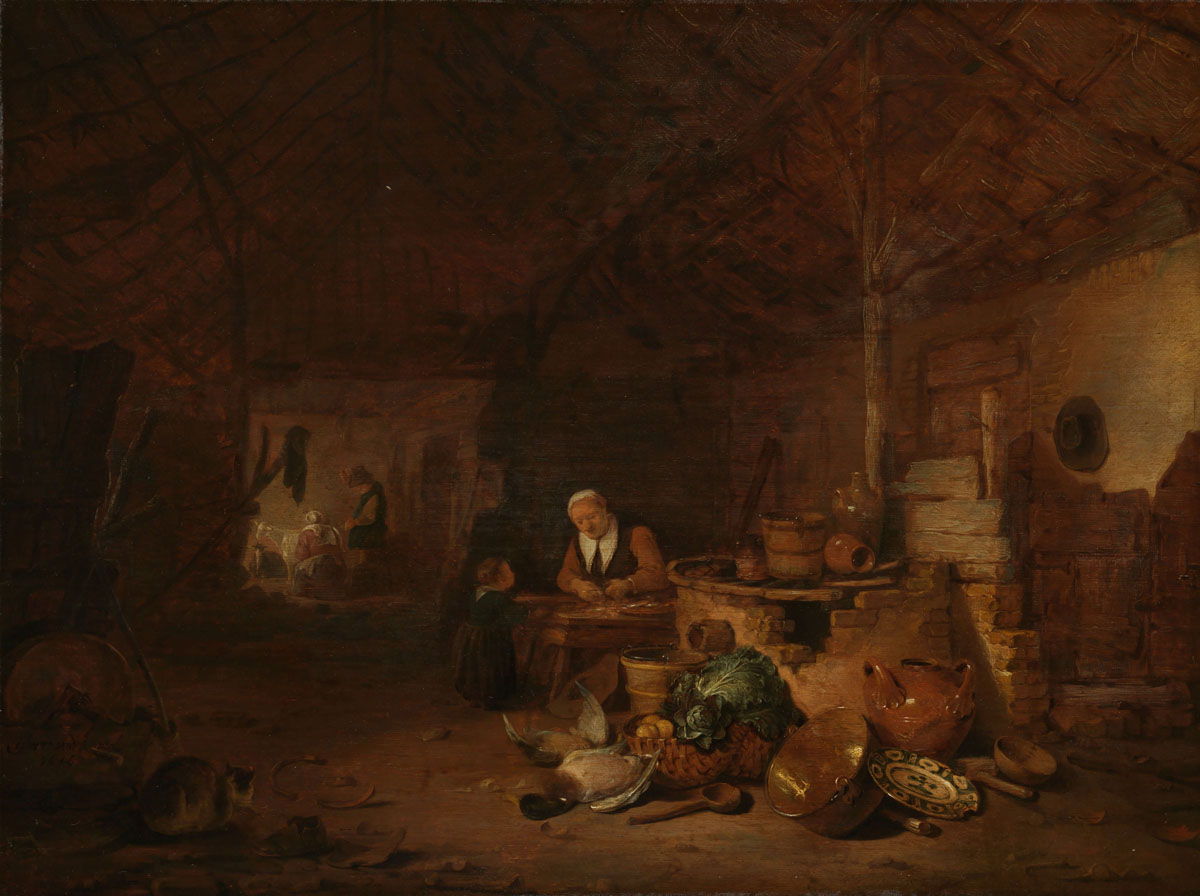VINCENT JANSZ VAN DER VINNE (1736–1811) after EGBERT LIEVENSZ VAN DER POEL (1621–1664)
Vincent Jansz van der Vinne (Haarlem 1736–1811 Haarlem) after Egbert Lievensz van der Poel (1621–1664)
A Barn Interior
Black chalk, watercolour, on wove paper, 260 x 347 mm (10.2 x 13.7 inch)
Signed and inscribed ‘Vincent van der Vinne / na Schildery van E: vander Poel’ (pen and brown ink, verso)
Provenance
~ Anonymous sale of coloured drawings, Haarlem, 20 July 1835, album C, no. 5: ‘Vt. van der Vinne. Eene Boerenschuur van binnen, waarin eene Vrouw staat te wasschen en verder bijwerk, als boven [uitmuntend met kleuren] naar E. van der Poel.’.
~ Private collection, Germany
***
Vincent Jansz. van der Vinne was born into a dynasty of Haarlem painters.1 He ran a firm of decorative painted wall hangings, which were hugely popular at the time, and was also active as an art dealer and auctioneer. Van der Vinne is best known today for being the first artist to be appointed ‘Kastelein’ (keeper) of Pieter Teyler’s collections of books, drawings and prints upon his death in April 1778, on the recommendation of the founder of Teylers Museum himself.2 Van der Vinne however resigned in 1785 because of ill relations with the Museum’s first director, Martinus van Marum, who insisted on access at all times to the Founder’s house, where Van der Vinne lived.3
A collection of some two dozen drawings by Van der Vinne is deposited in the Brussels Museum as part of the De Grez collection. Among these are copy drawing after Adam Pijnacker, Salomon de Bray and Jacob van Ruisdael.4 The present sheet was included in a sale in Haarlem in 1835 that featured several other copy drawings by Van der Vinne, after (among others) Jan Steen, Adriaen van Ostade, Meindert Hobbema, Thomas Wijck and Pieter de Bloot. In addition to his original drawings, Van der Vinne specialised in making such watercolour ‘natekeningen’, copy drawings, of famous paintings from the Golden Age. These drawings, both in colour and in grey wash, were considered as works of art in their own right, in which the artist transformed oil paintings into watercolour equivalents.
Egbert van der Poel was taught by Cornelis Saftleven in Rotterdam, but spent most of his working life in Delft.5 He painted landscapes, beach views and stable interiors, but is best known for his many depictions of the so-called thunderclap, the explosion of the gunpowder magazine in Delft on 12th October 1654, which killed many of his fellow townsmen, including Carel Fabritius. The original painting of the stable interior that Van der Vinne so meticulously copied is no longer known today, but a comparable example is preserved in the Rijksmuseum in Amsterdam, dating from 1646, well before the gunpowder explosion (fig.).6 The lost painting recorded in this ‘natekening’ is likely to have dated from the same period.
For two Paintings by Van der Poel sold by our gallery see here and here.
SOLD
1. For the artist, see B.C. Sliggers en D.F. Goudriaan, ‘De Haarlemse kunstenaarsfamilie Van der Vinne’, Jaarboek Centraal Bureau voor Genealogie 41 (1987), pp. 148-208 and B. Sliggers, ‘Vincent Jansz van der Vinne III’, in: Painting in Haarlem 1500-1850. The collection of the Frans Hals Museum, Ghent-Haarlem 2006, pp. 377-378.
2. Leslie A. Schwartz, The Dutch Drawings in the Teyler Museum, artists born between 1740 and 1800, Haarlem/Ghent/Doornspijk 2004, p. 16.
3. Schwartz, loc. cit.
4. Watercolour, 424 x 326 mm, inv. no. 3878; watercolour, 304 x 224 mm; inv. no. 3875; watercolour, 241 x 369 mm, inv. no. 3883.
5. For Van der Poel, see A. Goldschmidt, ‘Egbert van der Poel und Adriaen van der Poel’, Oud Holland 40 (1923), pp. 57-66.
6. Oil on panel, 48 x 64.5 cm, inv. no. SK-A-308; P.J.J. van Thiel, All the paintings of the Rijksmuseum in Amsterdam, Amsterdam 1976, no. A 308.
